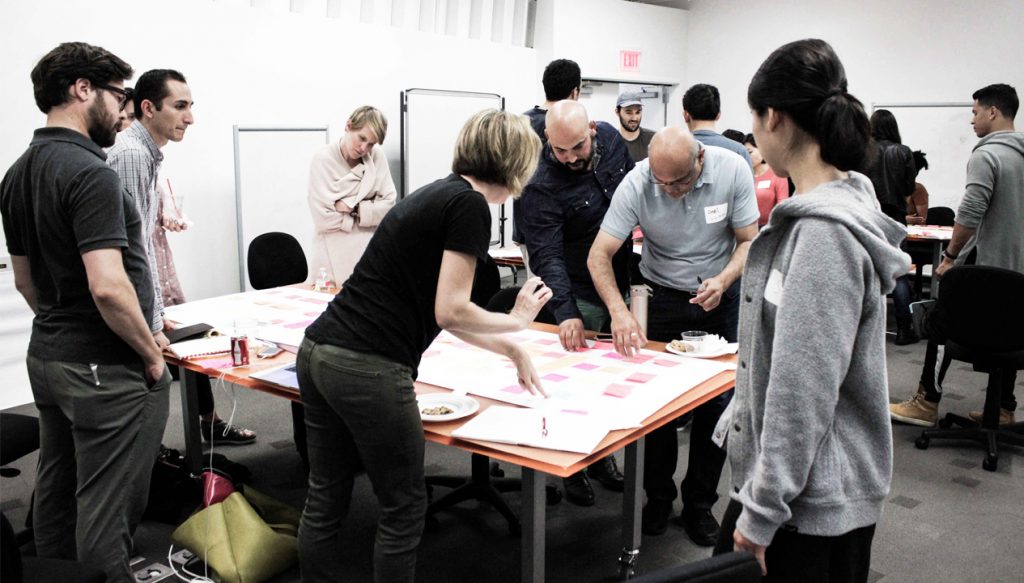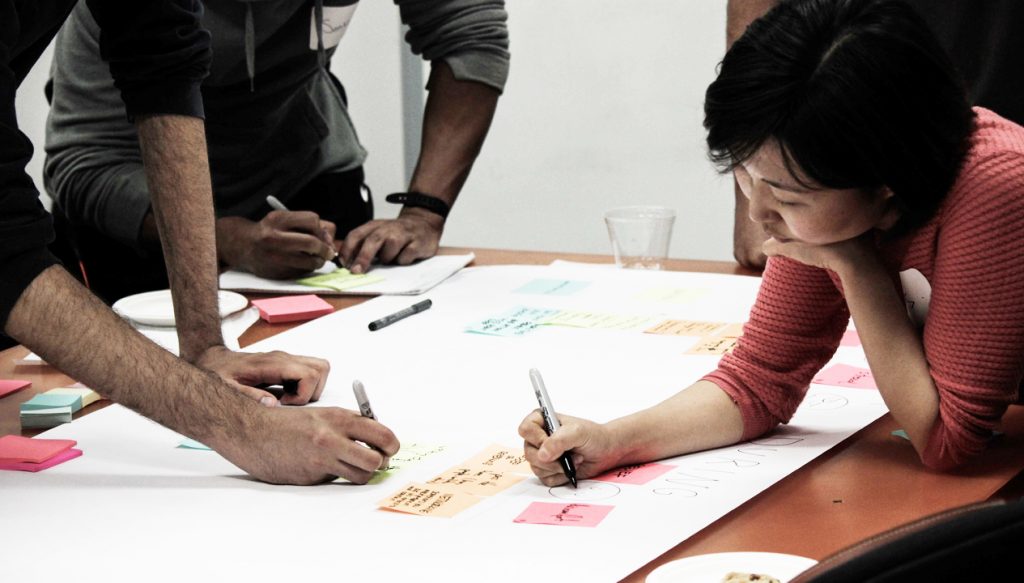The Director of Design and Insights at the Veteran’s Affairs Office, Sarah Brooks recently visited ArtCenter to give a guest lecture and Journey Mapping Workshop. Interaction Design student, Nicholas Jayanty, gives us an inside look at the workshop from his unique and witty point of view.
“First I go to the car park, but not the one that is close to my house. Most of the time that one is full, so I have to go a few stops down and park there, but sometimes there’s no spot there either.” And so it begins, a day in the life of a Los Angeles commuter exploring the step-by-step progression of their trip to work, conjured by a journey mapping exercise moderated by the Director of Design and Insights at the Veteran’s Affairs Office, Sarah Brooks.
As my group member shared the grim details of a nearly two-hour commute both ways, I felt my brow knit and my heart rate accelerate. Dotting the eight-foot long sheet of paper covered in carefully gridded post-its organized into rows headed by “Doing, Thinking, Feeling,” we were on a hunt for opportunity. A feeling with one foot in rage and the other in disgust began to surface, and my problem-solving brain kicked into motion as I scanned the length of this commuter’s journey searching for opportunities to make his commute suck just a little bit less. It was that moment that I realized commuting is just the tip of an iceberg buoyed by corporate culture, car culture, urban sprawl and all of these other messy elements.
Reserved parking, or a parking app that lets users know where the open spots were in advance, or a latte waiting at a food cart at his train station: these ideas poured forth. A pastry at the end of your journey? That sounds reasonable, so how could we make that happen?
In that moment, I realized the value of empathy in my own personal process. Describing it now, I realize empathy is sort of like a handshake. The sender shares an experience, the receiver absorbs and internalizes the experience, but beyond the exchange of information, there’s a visceral exchange of intention and emotion.
There’s enough room in the brain to make room for the sender’s feelings about their experience, but for me it is not until my own emotional interpretation kicks in that the brain starts to work on the problem. I reflect on my own experiences and the tactics and techniques I’ve used in the past to make something horrible a bit better, or positive experiences that surprised me when I expected something to be not so much fun.
The power of journey mapping is that it surfaces not only the steps involved, but also the internal monologue and emotional response to each user’s memory of the experience in question. It paints a picture of empathy for all involved.
Liz Sanders, a leader in generative research practice, is known for the Path of Expression framework: only through reflecting on the past are users able to see future possibilities. After experiencing the detailed approach to journey mapping courtesy of Sarah Brooks, I’ve been empowered to facilitate users being able to take that first step to co-creating a brighter future, and pin pointed how one of the key elements of human centered design, empathy, makes my design mind tick.
This opportunity was made possible in part by support from the Designmatters Educational Program Grant from the Autodesk Foundation.


